Discover 11 hidden attractions, cool sights, and unusual things to do in Wollongong (Australia). Don't miss out on these must-see attractions: Nan Tien Temple, Wollongong Entertainment Centre, and Breakwater Battery. Also, be sure to include Wollongong Botanic Garden in your itinerary.
Below, you can find the list of the most amazing places you should visit in Wollongong (New South Wales).
Table of Contents
Nan Tien Temple
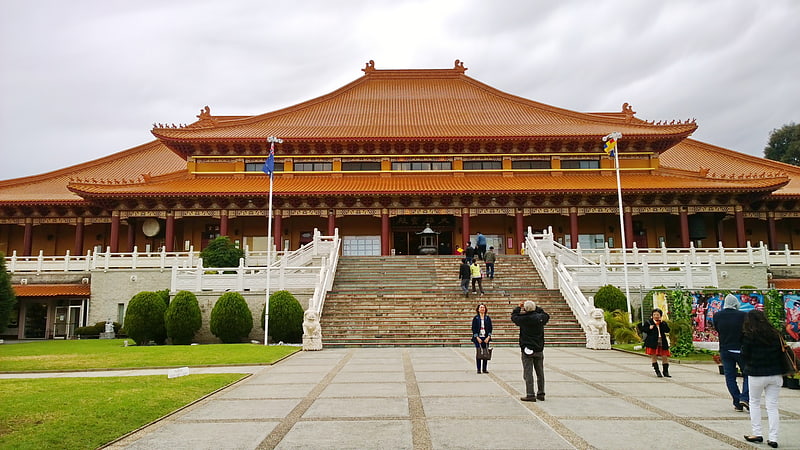
Big Buddhist temple offering retreats. Nan Tien Temple is a Buddhist temple complex located in Berkeley, on the southern outskirts of the Australian city of Wollongong, approximately 80 kilometres south of Sydney.
Nan Tien is one of the branch temples of the Taiwanese Fo Guang Shan Buddhist order, founded in 1967 by Hsing Yun, which has over 120 branches worldwide. The temple is one of the largest Buddhist temples in the southern hemisphere.[1]
Address: 180 Berkeley Rd., 2506 Berkeley
Wollongong Entertainment Centre
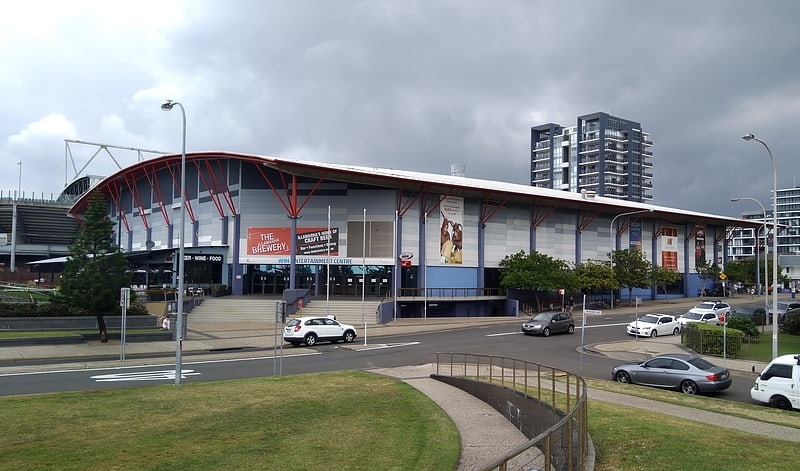
Arena in Australia. Wollongong Entertainment Centre is a multi-purpose indoor arena, located in Wollongong, New South Wales, Australia.
The WEC opened on 5 September 1998 with a concert by Bob Dylan and Patti Smith; 4,935 people attended the event. Dylan performed at the venue again in 2011, performing to a crowd of 3,214 people, and again in 2018.
The arena is 3 minutes walk from the city centre and has hosted a variety of events including Federation Cup tennis, world championship boxing and international musical acts.
Every year the WIN Entertainment Centre holds the Wakakirri Story Dance Wollongong heat, Southern Stars and also a variety of concerts and expos.
The building was designed by the New South Wales Government Architect.[2]
Address: Harbour St., 2500 Wollongong
Breakwater Battery
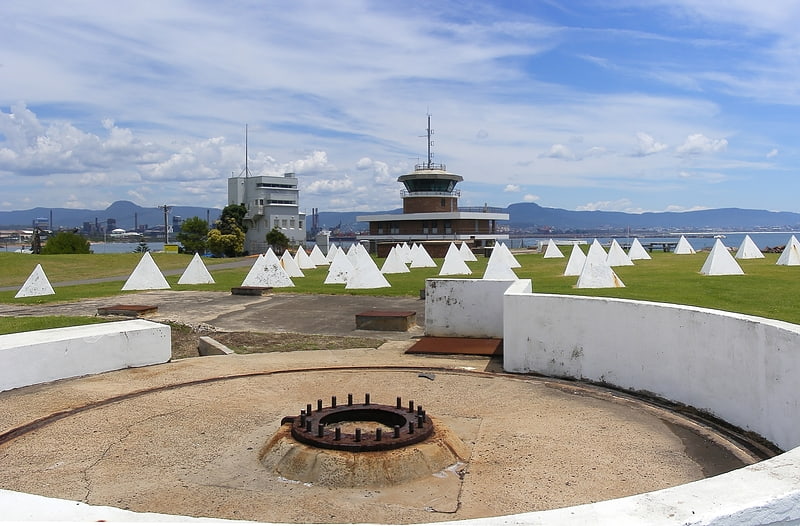
Breakwater Battery, was a coastal defence battery at Port Kembla, New South Wales, Australia during World War II.
Constructed in 1939 to provide protection for Port Kembla from enemy shipping and submarines. Two 6 inch Mk XI gun emplacements with related underground facilities were constructed near the southern breakwater at Port Kembla.
The battery and observation post (now a military museum) were key structures of the command centre for Fortress Kembla during World War II.[3]
Wollongong Botanic Garden

Botanical garden in Keiraville, Australia. The Wollongong Botanic Garden is located in the Wollongong suburb of Keiraville at the foot of Mount Keira in New South Wales, Australia. It is the local botanical gardens of the Illawarra and was established in 1964. It was opened in September 1970.
The garden is co-located with the historic Gleniffer Brae house, used for functions and the Wollongong Conservatorium of Music.
A number of annexes are managed by the garden - Puckeys Estate Reserve in Fairy Meadow, the Korrongulla Wetlands in Primbee and the Mount Keira Summit Park.[4]
Address: Murphys Ave, 2500 Wollongong
Wollongong Head Lighthouse
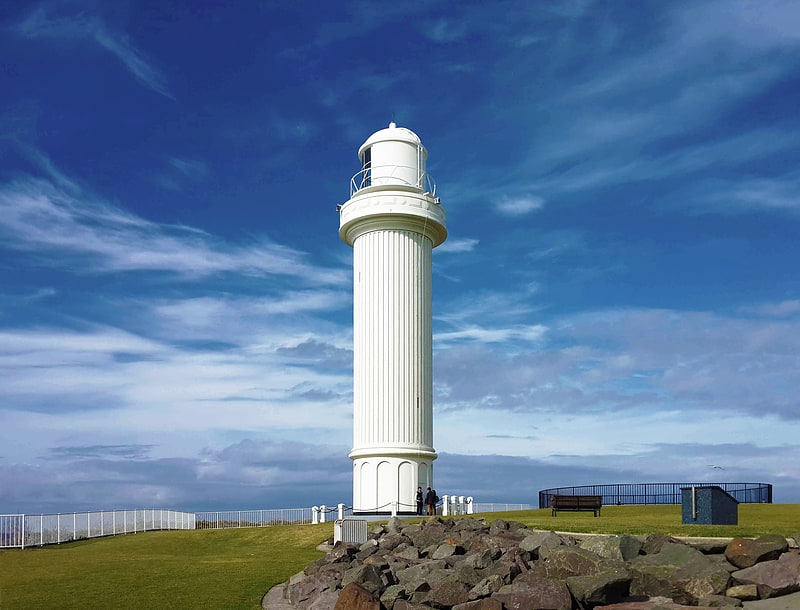
Lighthouse in the City of Wollongong, Australia. The Wollongong Head Lighthouse, also known as Flagstaff Hill Lighthouse or Flagstaff Point Light, is an active lighthouse located adjacent to the heritage-listed Wollongong Harbour precinct in Wollongong, a coastal city south of Sydney, New South Wales, Australia. It overlooks the Tasman Sea from the top of Flagstaff Point, directly east of the city centre. Wollongong is the only place in the east of Australia to have two lighthouses located in close proximity of each other, the other being Wollongong Breakwater Lighthouse.
Wollongong Harbour is home to private vessels and the local fishing fleet in its inner Belmore Basin. South of the city is Port Kembla, a major steelmaking, minerals, grain and vehicle handling harbour. A further hazard to shipping is an island group known collectively as The Five Islands lying a short distance off the coast.[5]
Address: Endeavour Drive, Wollongong
Wollongong Breakwater Lighthouse
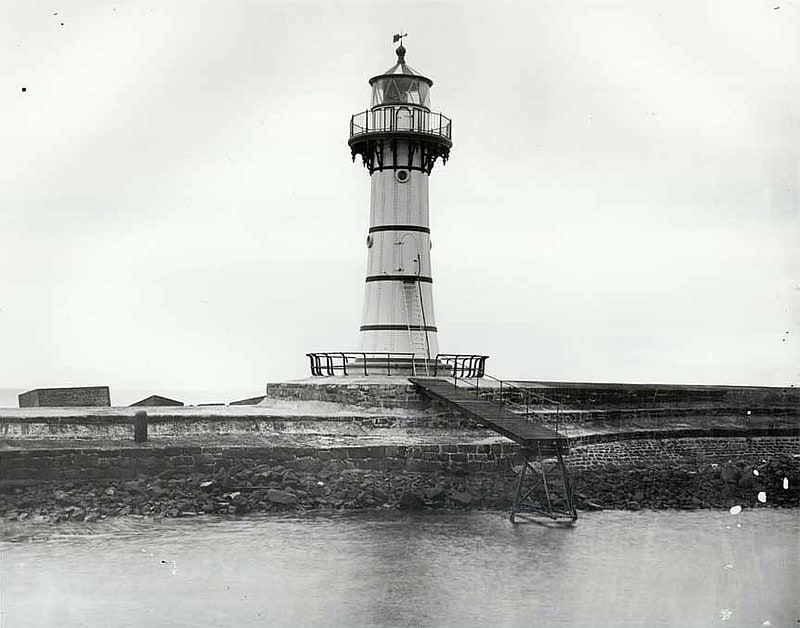
Lighthouse in Australia. Wollongong Breakwater Lighthouse, also known as Wollongong Harbour Lighthouse, is a historic lighthouse situated on the southern breakwater of the heritage-listed Wollongong Harbour, in Wollongong, New South Wales in Australia. Wollongong is the only place in the east of Australia to have two lighthouses located in close proximity of each other, the other being Wollongong Head Lighthouse. While no longer used, the lighthouse was restored in 2002 as operational and is listed an official local heritage building.
The Wollongong Harbour is home to private vessels and the local fishing fleet in the inner Belmore Basin. South of the city lies Port Kembla, a major steelmaking, minerals, grain and vehicle handling harbour. A further hazard to shipping is an island group known collectively as The Five Islands lying a short distance off the coast.[6]
Wollongong Harbour
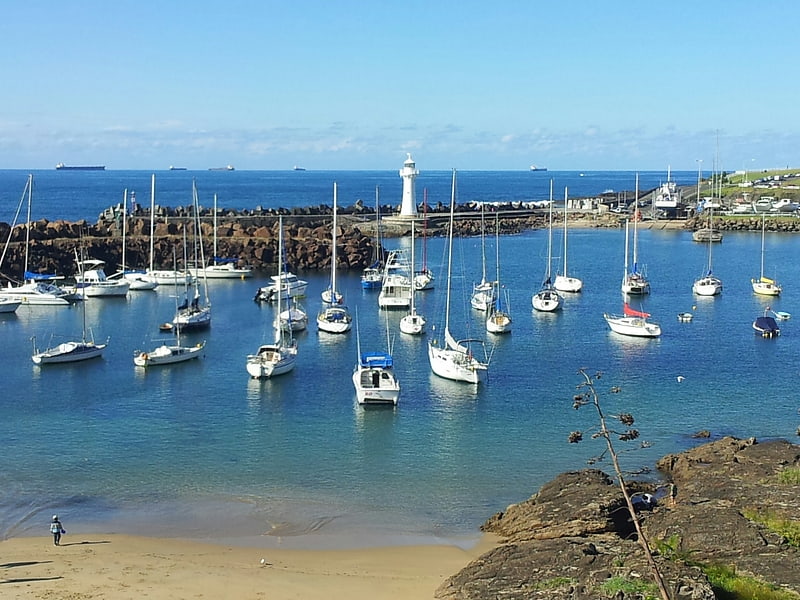
Wollongong Harbour Precinct is a heritage-listed shipping harbour at Cliff Road and Endeavour Drive, in Wollongong, New South Wales, Australia. It was built in 1837. The historic precinct includes Belmore Basin, Government Dam, Government Basin, Stockade Point, Flagstaff Hill, Signal Hill, Brighton Beach, Boat Harbour and Fortress Hill. It was added to the New South Wales State Heritage Register on 5 May 2010.[7]
Flagstaff Hill Fort
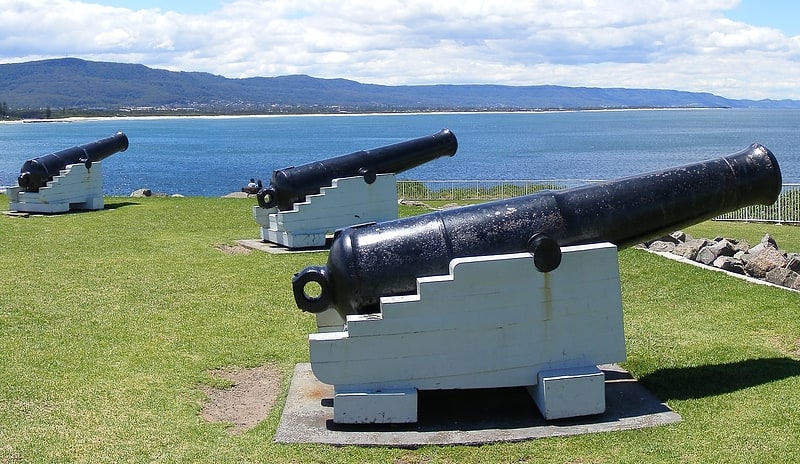
Fort in Australia. Flagstaff Hill Fort is a former military fort at Flagstaff Point, Wollongong, New South Wales, Australia.[8]
Address: Endeavour Dr., 2500 Wollongong
St Michael's Cathedral
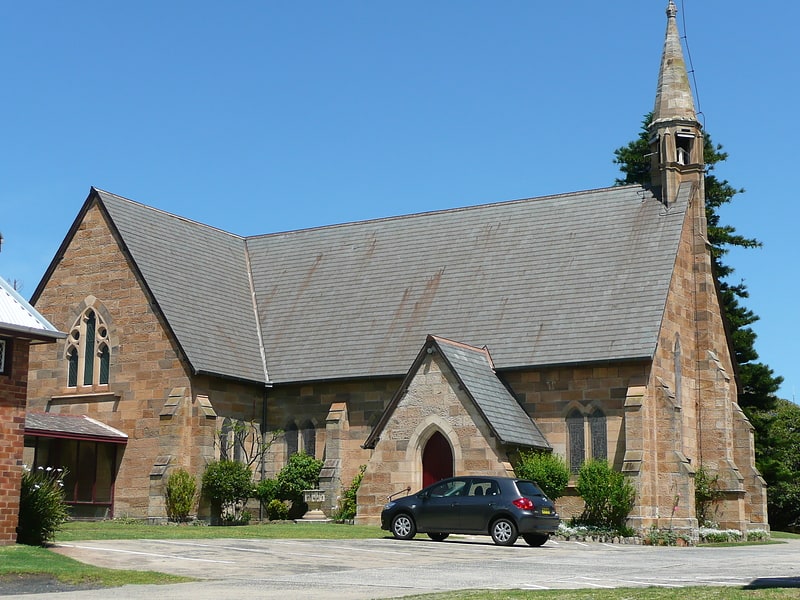
Anglican church in the City of Wollongong, Australia. St Michael's Cathedral is a heritage-listed Anglican cathedral at Church Street, Wollongong, City of Wollongong, New South Wales, Australia. It is the principal Anglican church in the city of Wollongong and the mother-church of the Bishop of Wollongong. It was designed by Edmund Blacket and built from 1858 to 1859. The property is owned by the Anglican Church Property Trust. It was added to the New South Wales State Heritage Register on 2 April 1999.[9]
Address: Market St, 2500 Wollongong
Old Wollongong Telegraph and Post Office
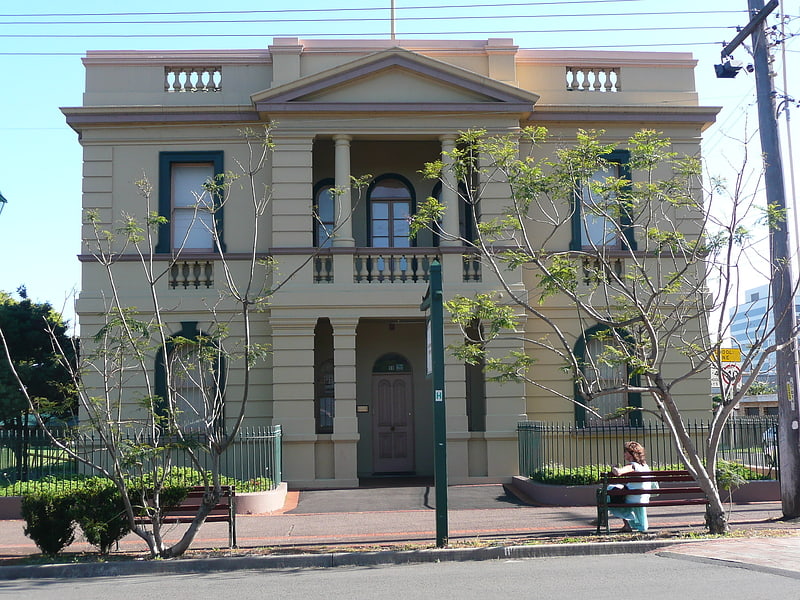
The Old Wollongong Telegraph and Post Office is a heritage-listed former government offices, telegraph station and post office and now local history museum at 11 Market Street, Wollongong, in the City of Wollongong local government area of New South Wales, Australia. James Barnet designed the 1882 extension and expansion. The telegraph and post office was built from 1864 to 1882 in varying stage by S. E. Bloomfield, George Brown, George Billings, Andrew Herd and the NSW Government. It is also known as Illawarra Historical Society Museum; Wollongong Museum; and Illawarra Museum. The property is owned by Wollongong City Council. It was added to the New South Wales State Heritage Register on 27 February 2015.[10]
Port Kembla
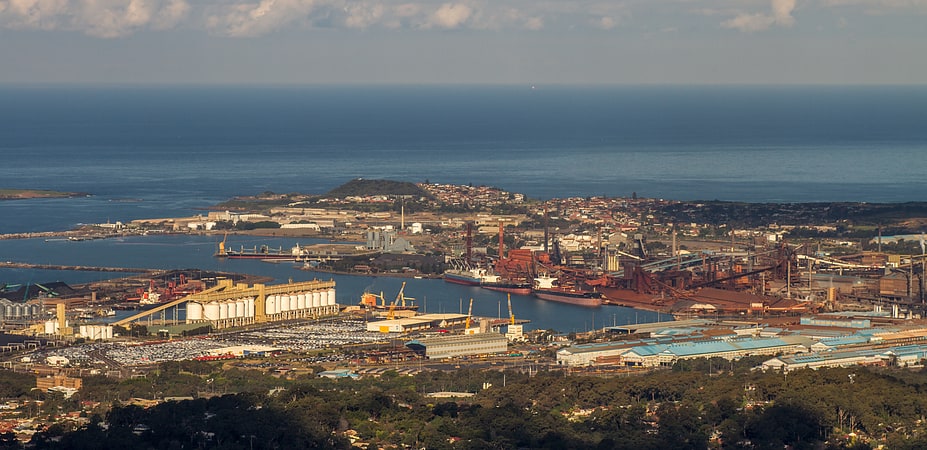
Australian Suburb. Port Kembla is a suburb of Wollongong 8 km south of the CBD and part of the Illawarra region of New South Wales. The suburb comprises a seaport, industrial complex, a small harbour foreshore nature reserve, and a small commercial sector. It is situated on the tip of Red Point: its first European sighting was by Captain James Cook in 1770. The name "Kembla" is an Aboriginal word meaning "plenty wild fowl".[11]